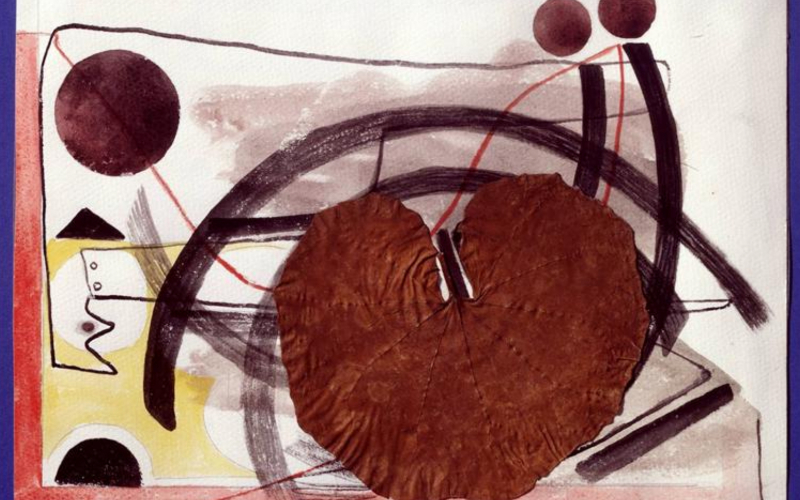Eileen Agar frequently created collages, and in this image she embellished a gouache with a leaf.
Agar was investigating the concepts of life, death, time passing, and seasonal cycles, just like in her work Autobiography of an Embryo.
She encapsulates a variety of common concepts in a single, straightforward image.
The collage depicts a mechanical reaper chopping a crop on a farm, a metaphor for death, despite the fact that it appears to be abstract. In 1978, she discussed and clarified the collage:
“The leaf came from a ‘dry garden’, a book I have which dries and preserves leaves pressed between special paper. It was dead originally when used for the collage, but it was one I must have picked myself. The whole watercolour was intended to suggest a symbolic reaper with the flailing movement of the scythe-like concentric forms. The title indeed relates to time, the seasons and especially death the Great Reaper. The dead leaf being the hub of the whole.
Time is expressed more especially by the large black sun, which at the bottom left hand corner is sinking.
The little triangle suggests a country roof and the two black spots two people riding the machine.
There is also the outline of the back of a cow, with the small forelegs implanted on either side of the stem of the leaf.”
The frame was a “found” item painted in silver and gold, and the picture is mounted on blue paper.
The artist acknowledged that the mount and frame help the painting to suggest secondary connections; for instance, the blue and gold can be connected to the sky and the sun, notwithstanding the artist’s denial that the framing had any “special significance.”
The image debuted in 1965 as part of the exhibition Art in Britain 1930-1940, which examined the avant-garde of the 1930s at Marlborough Fine Art.


